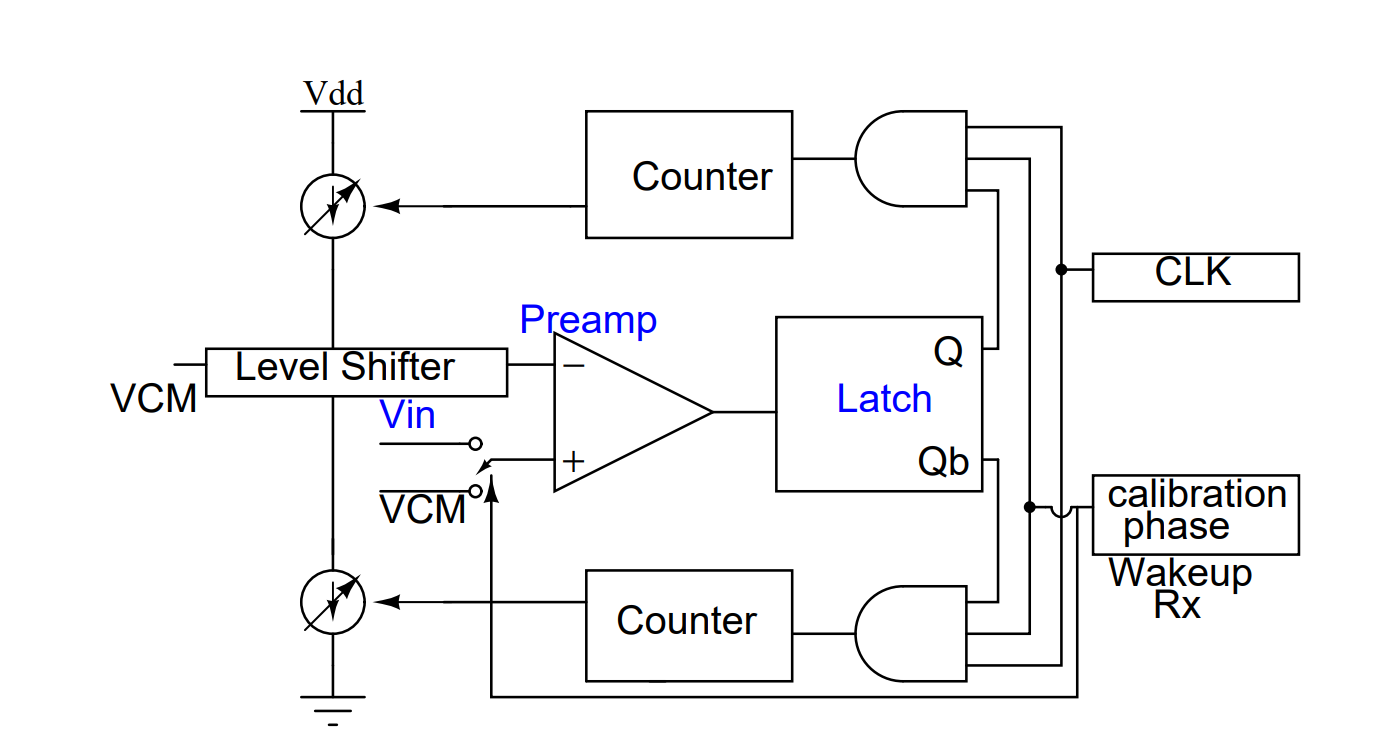The invention presents a Frequency to Digital Sigma Delta based Frequency Modulation/Frequency Shift Keying (FDSM-FM/FSK) receiver operating in the MICS band (400–405 MHz). The receiver comprises a SAW filter, low-noise amplifier, zero-crossing detector (ZCD), D flip-flop based sigma-delta modulator, and a digital decimator. It offers a compact, low-power solution with high signal-to-quantization-noise ratio (SQNR) and is well-suited for implantable medical devices. The ZCD resolves inputs as low as 200 μV at 400 MHz using high-gain, wide-ICMR gain stages. The architecture is robust to process and voltage variations and enables cost-effective, energy-efficient FM/FSK demodulation.
Medical implant receivers require extremely low power, compact size, and high fidelity due to battery limitations and constrained form factor. Traditional zero-IF or superheterodyne architectures suffer from DC offset and image frequency issues, increasing complexity and power usage.
- Frequency to Digital Conversion: A novel receiver architecture using FDSM achieves demodulation of FM/FSK SQNR.
- Efficient Modulator Architecture: The design uses a D flip-flop (D-FF) based FDSM operating in modulo-2 arithmetic to reduce aliasing, allowing low-power and area-efficient FM demodulation.
- High Resolution ZCD: A zero-crossing detector (ZCD) is developed with sub-200 μV resolution at 400 MHz using cascaded linear and nonlinear gain stages to convert low-level inputs to rail-rail outputs across process corners.
- Low-Power Integrated Design: The architecture incorporates surface acoustic wave (SAW) filters, low pass amplifiers (LNA), and digital decimation stages to enable narrow-band, low-cost, high-performance medical implant communication service(MICS)-band receivers.
- Robustness and Scalability: The system performs reliably across process, temperature, and voltage variations with simulation-proven SQNR >60 dB and stable functionality for ECG signals up to 1 kHz.
The prototype includes a frequency to digital sigma delta demodulator chain implemented in the MICS band. It features a SAW front-end filter (Q = 66), a high-gain LNA, a precision zero-crossing detector, a D-FF-based FDSM, and a digital decimator. Simulations verify high SQNR performance and robustness to process corners. The zero-crossing detector integrates cascaded gain stages with wide ICMR and pseudo-positive feedback for 400 MHz operation. The receiver chain has been modeled with ECG signal inputs and achieves 200 μV resolution with low power across stages.
A working process has been developed and tested.
3
This innovation enables low-power, high-performance communication for body-worn and implantable medical telemetry, enhancing patient safety, battery life, and diagnostic capabilities in healthcare.
- Wireless biotelemetry
- Medical implants
- Body area network (BAN) devices
- Communication ICs for healthcare
- Internet of Medical Things (IoMT)
Geography of IP
Type of IP
1598/MUM/2013
370107

